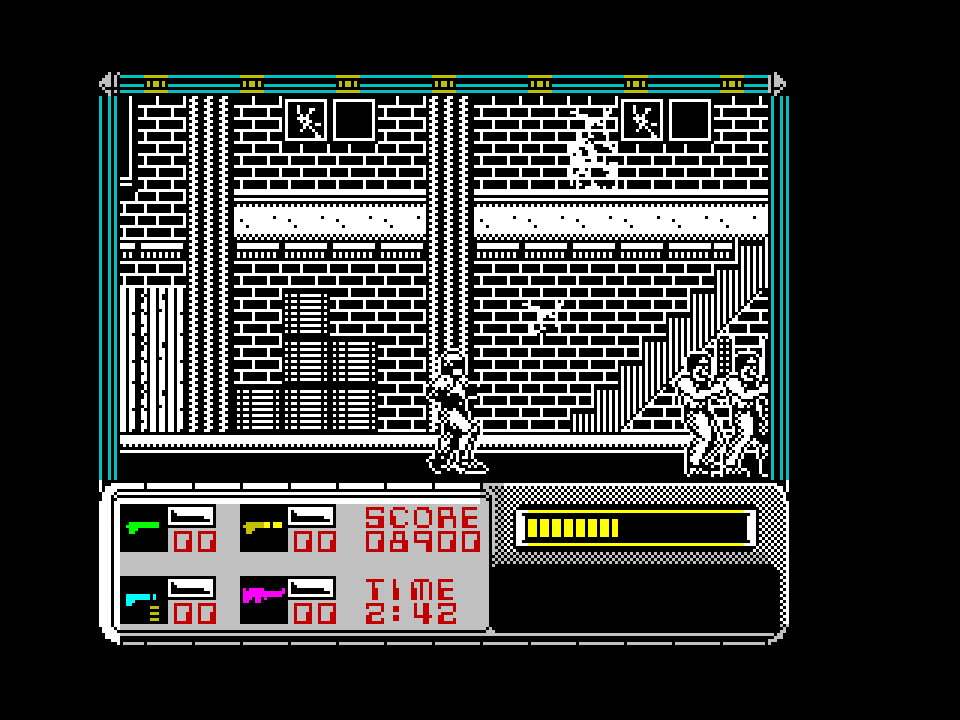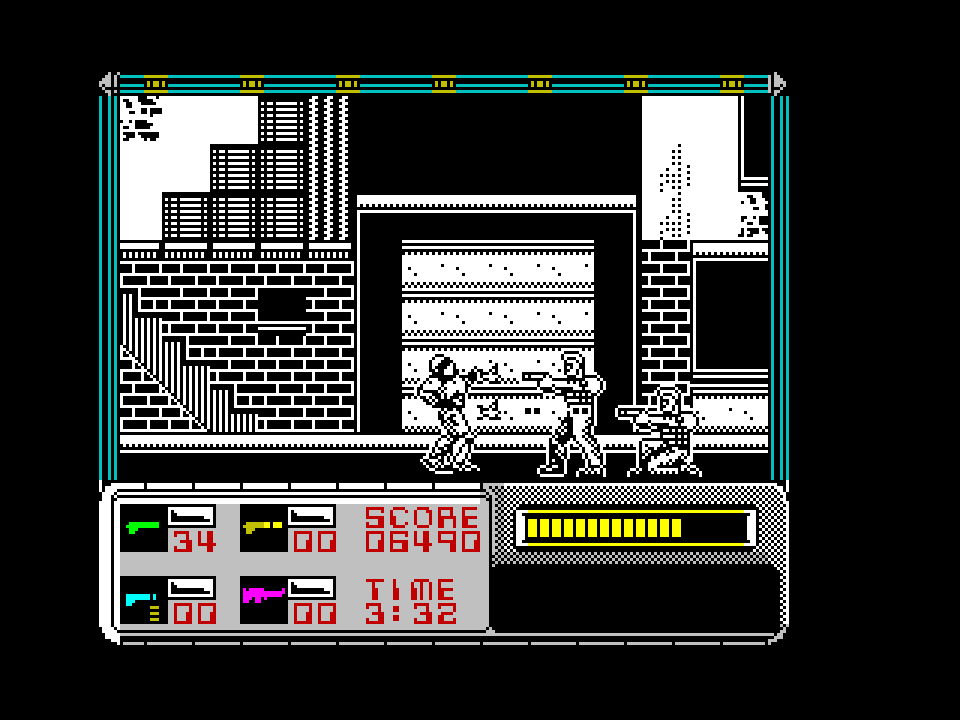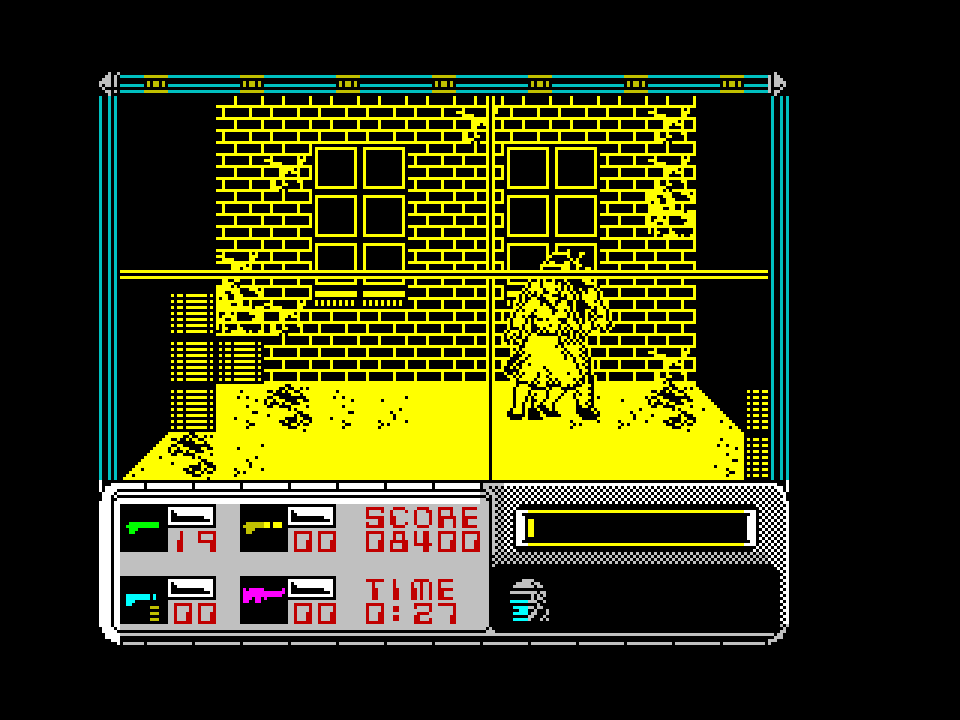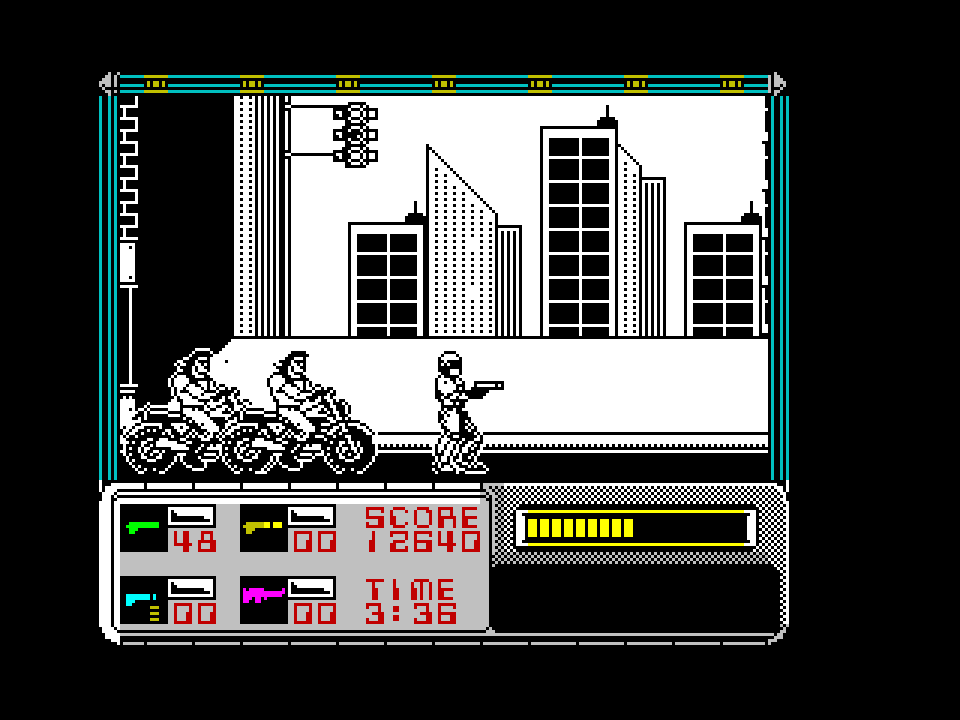RoboCop Review
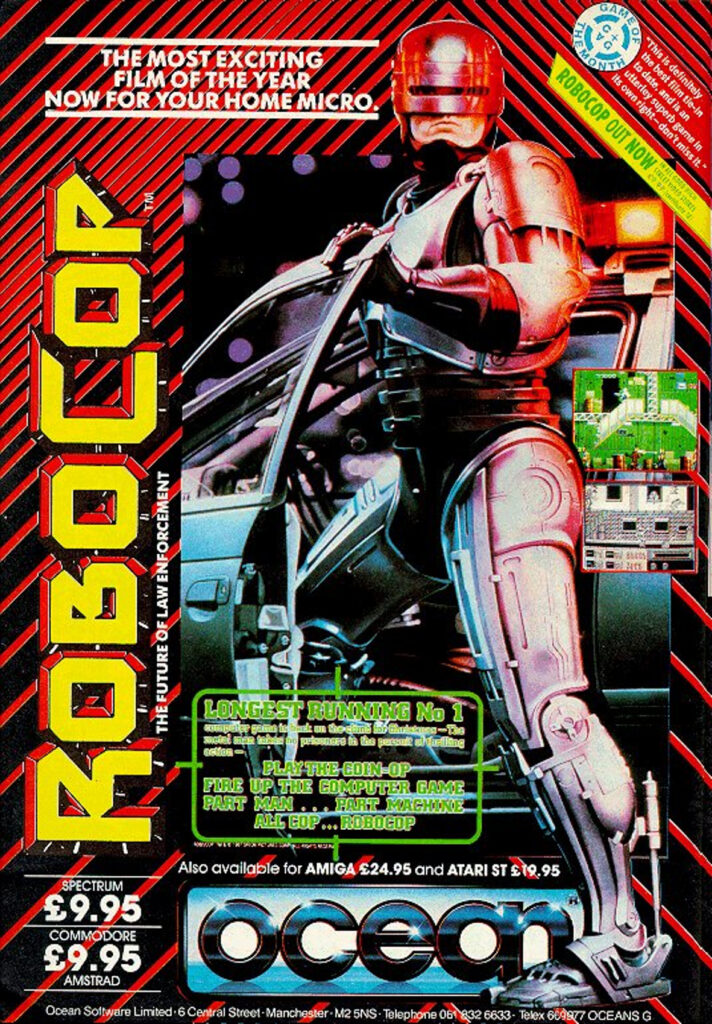
The tie-in to Paul Verhoeven’s 1987 masterpiece of an action thriller… As time goes by, one can’t help wondering if this game didn’t represent some sort of quality apex and a particularly magic video game presence when it came to movie license-based games.
STORY
That the movie was one huge, ground-breaking and inimitable hit is well known, as is the controversy surrounding most aspects of it. But that’s exactly why it’s both immortal and timeless these days. RoboCop has got everything. It perfectly fused extremely violent and gritty action with social commentary and the blurred, mental line between man and machine… So why should the video game adaptation be worse within the boundaries of the media? Granted, the game doesn’t have such juicy on-screen violence that it “needed” to be censored, but the production was quite an unusual one. Ocean secured the rights for the game long before the movie came out in the theaters. Data East subsequently licensed the rights to develop the arcade game. Then, Ocean programmed and released the home versions. It took until spring 1989 before the Commodore 64- and ZX Spectrum-owners could play anything RoboCop-related. (The 16-bit versions followed shortly.)
More controversy disgraced the C64-version regarding its rushed release and its infamous game-breaking glitches… But the Spectrum version is entirely a different story. A representation of that aforementioned quality apex. A fantastic motion picture spawned a great Coin-Op AND great 8-bit versions.
THE GAME
Even if the home versions remind of the arcade one, they play quite differently and at a very different pace. (Slower compared to other action games – Just like the movie.) All versions share some of the level design and environments, but the differences between the Coin-Op and, in this case, the Spectrum version are quite a few. The latter is more varied and doesn’t have the target practice Bonus-game. It also follows the plot from the movie more closely.
RoboCop has nine sections. The first one is a horizontally scrolling mix of Run ‘n Gun (When Robo has ammo.) and a Beat ‘Em-Up. (When Robo runs out of ammo and has to punch motherfuckers.) In other words, this is when Alex Murphy already has become RoboCop and marches down the streets that are crawling with scum. They are everywhere and some of them are even wielding chainsaws. None of them are immune to lead poisoning, though. RoboCop automatically switches to punches when baddies get within punching range.
The street patrol leads to the first person view segment where RoboCop saves a woman from a bad guy. Too bad the programmers didn’t make it possible to shoot him in the cock. You can actually kill the hostage before killing the bad guy, but that’s not serving the public trust, protecting the innocent, or upholding the law…!
Section three is more street patrol, and this is where numerous bikers hit and run. One of them is that lunatic from Clarence Boddicker’s gang whose picture RoboCop transfers to the police computer in order to identity him. So the fourth section is a puzzle game where you see the bad guy’s face and need to piece together an identical one from various eyes, noses, ears, etc.
Which leads to the attacks in the drug factory…! This section has five floors and stairs that Robo has to climb. And more baddies. In the movie, this is the part that leads to RoboCop arresting Boddicker and where Murphy finds out that the creator of ED-209, Dick Jones, isn’t at all a very nice person… (The game even refers to the “Arrest Mode” and “Directive 4”.) So meet ED-209… That Robo has to fight unarmed…
If Murphy survives that ordeal, he has to try to escape from OCP with even more baddies trying to kill him. The final battle where Jones orders Boddicker to destroy RoboCop takes place in a junkyard. Unfortunately, there is no way to melt bad guys in toxic waste silos or tear Boddicker’s throat out at the end. But this leads to the confrontation (The second and last first person view mini-game.) with Jones at OCP. Jones has taken the president of OCP hostage and tries to kill RoboCop at the same time. After some nice shooting, the game is over.
CONTENT
In 48K-mode, the game loads in three parts. The 128K-one loads everything into the memory at once. Plus you get the vastly superior sound, as usual.
Just like in the movie, RoboCop does a lot of shooting. The default gun in the game is the weakest one (Some thugs can take several bullets.), but it can be upgraded with more powerful bullets as well as a fine triple-shooter. The best weapon is that cannon that Robo obtains on Level 8. (The junkyard.) Even the default weapon runs out of ammo, so he can’t shoot non-stop. (Unless he wishes to try taking out speeding motorcycles with his bare fists.)
To restore energy, there are jars of the stuff that tastes like baby-food. These are found here and there throughout the game.
All levels have a time limit. At the end of a level, you get Bonus-points for time and energy left. Plus a “Special Bonus for completing a level”.
CONTROLS
Options are: Keyboard, Sinclair, or Kempston. And keys can be defined. Apart from walking, crouching, and climbing up and down stairs (On some levels.), RoboCop can aim and shoot in five different directions – Left, right, and up, as well as diagonally up left and right.
There are just about zero issues with the controls. RoboCop doesn’t move like an athlete, and his pixellated alter ego doesn’t either.
GRAPHICS
Obvious hard work went into creating the backgrounds, sprites, and animations. The fair comparison would be to the C64 version. The various environments look the part and RoboCop’s walking animation is of top class. The enemies fade out of existence (Instead of exploding.) when biting the dust.
You get more visual details in some places on the Spectrum, but lose all color. (Except two, obviously.) But this port has several subtle touches missing from other versions. For example, RoboCop’s cross-hair in the first person segments is a vertical and horizontal line across the entire screen – Just like his green HUD in the movie. (In the C64 port, this was just an ordinary cross-hair.)
RoboCop also winces and is temporarily paralyzed when he is injured. This makes the game harder and more challenging… And more frustrating. (Because while he is paralyzed, the baddies don’t exactly stop shooting.) And it doesn’t feel like he’s just a bullet-sponge.
At the end of a level, RoboCop walks “into” the screen instead of just stopping in his tracks.
Nice loading screen as well. It’s a cropped variant of one of the more famous movie posters.
SOUND
As expected, you only get a very small handful of sound effects in 48K-mode. And nothing else apart from dead silence.
128K-mode gives you Jonathan Dunn’s beautifully melancholic title-screen tune that’s exclusive to the 8-bit versions. Nothing beats the SID-chip, but the Spectrum rendition of the music sounds supremely cute. It’s simply just over three minutes of iconic video game music.
The in-game tune on the Speccy is the same tune that’s on the C64, except with some variations to the melody. It’s a bloody good groove that fits this game, and this game only. One or two more tunes on the subsequent levels wouldn’t have hurt, but it’s all right.
The other feature on the Spectrum is sampled speech from the film where RoboCop reads his directives as well as exclaiming “RoboCop!” when the game starts and when a level is completed. (But what does he say when he dies?)
SUMMARY
RoboCop is not only a solid action game, but it’s also one that represents the source material in a respectful manner. The ZX Spectrum version additionally proved that Ocean could produce something that would stand the test of time as well as something that gameplay-wise could be better than the 16-bit versions.
This is also a historic video game when it comes to movie tie-ins. If all of them had been made with the same care and attention for detail post RoboCop, they wouldn’t have been shit-stained forever. Bad movie adaptations sure as hell existed before RoboCop, but it wasn’t like some of the stuff that we saw on the Amiga… Or let’s put it this way: Cobra may not have been a landmark in video game design, but at least it wasn’t Nightbreed – The Interactive Movie.
Developed by: Mike Lamb, Dawn Drake, Bill Harbison and Jonathan Dunn.
Published by: Ocean
Version Reviewed: ZX Spectrum 48K/128K
Genre: Run ‘n Gun
Players: 1
Also Available On: Commodore 64, Commodore Amiga, Arcade, SEGA Master System, MSX, etc.
Released: 1989

